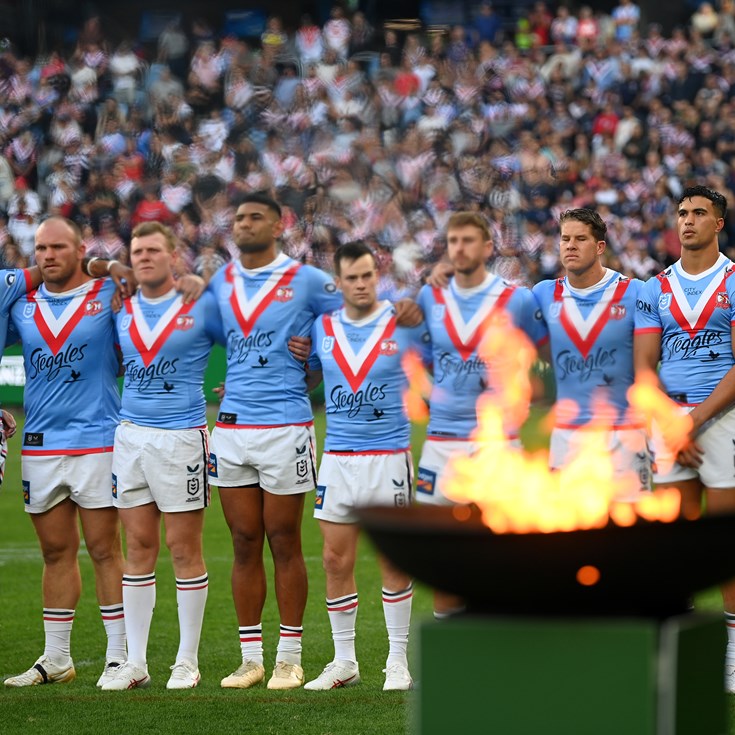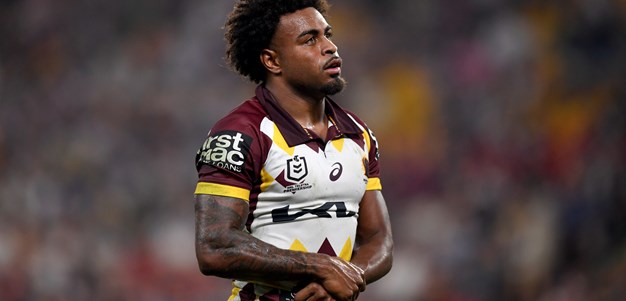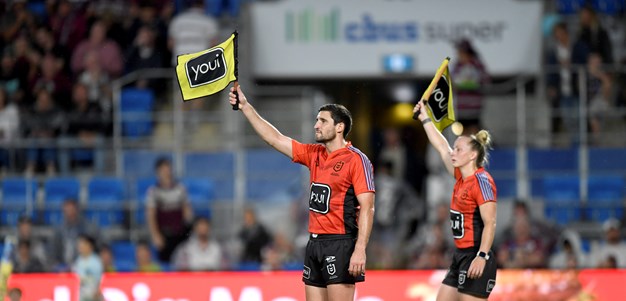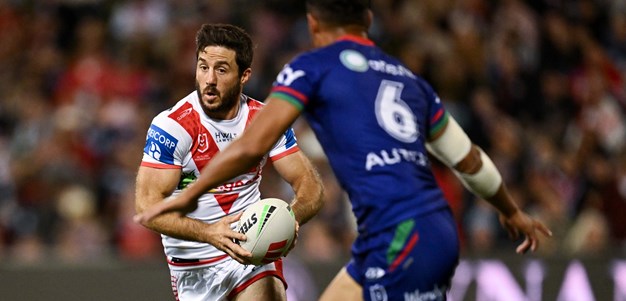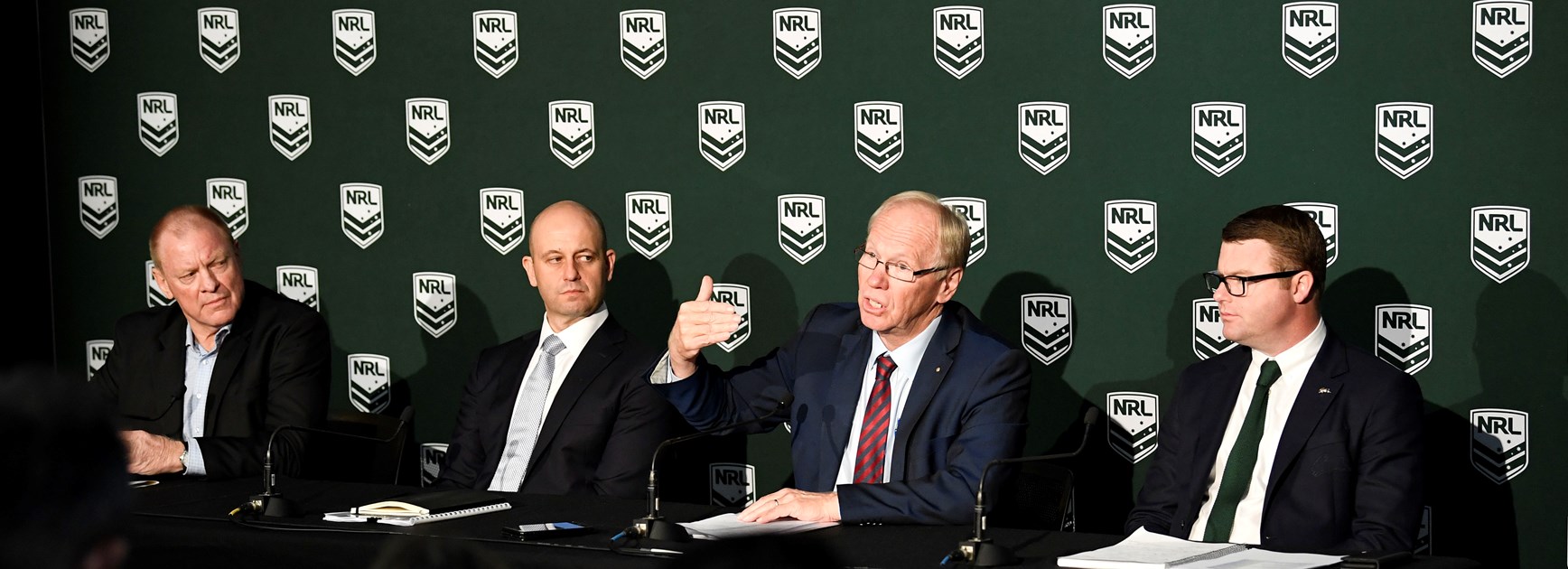
The 2018 Telstra Premiership season will see "between five and eight" clubs break even off the back of the financial success of a code on course to deliver a $45 million surplus this year.
In 2017 only one of the 16 clubs returned a profit without the help of leagues club funding – the Brisbane Broncos.
ARL Commission chairman Peter Beattie and NRL chief executive Todd Greenberg delivered the half-yearly results to club chairs and CEOs at Moore Park headquarters on Friday. They anticipate up to half of the clubs to be in the black this year.
"So around six clubs – never happened before," Greenberg said.
Beattie promised to open the books to clubs and the States – representatives from the QRL and NSWRL now sit on the ARLC's finance audit committee – when he took over from former chair John Grant last December.
"This is actually a closer working relationship than perhaps the administration of the game has ever had with our clubs chairs and our CEOs," Beattie said. "And we're determined to keep doing that."
In April at the quarterly release of financial data, the NRL was on course for a $40 million profit. That figure is now $45 million for the 2018 year.
Coaches Corner: Which Origin stars backed up
Chief Operating Officer Tony Crawford said the NRL's improved financial health over the past five years meant it was "in the top 10" of the 100-listed companies on the ASX [Australian Stock Exchange] for performance.
This time last year the NRL was wrangling with the RLPA on a new collective bargaining agreement for players, after battling the 16 NRL clubs on their grants and funding over the course of the five-year broadcast deal [2018-2022].
The game was $11.2 million in the red. But now is $27.8 million in the black and on track for a $45 million surplus.
"We're building the future of the game now," Beattie said.
Among the figures released on Friday:
- Commercial revenue has grown from $42.1 million in 2017 to $60.1 million in 2018
- A 29% rise in sponsorship revenue [$20.7m to $26.7m]
- Direct costs have grown 13% compared with a 43% increase in commercial revenue
- Operating costs at the NRL have remained flat, excluding the one-off redundancy payments of approximately $1 million for about 30 staff
- Major events revenue dropped by 24% [$4.2m to $3.2m] due to no Auckland Nines or All Stars events, but these figures don't include the 2018 Holden State of Origin series or Grand Final as they haven't been held yet
- Broadcast revenue has grown from $103m at 2017 half-year mark, to $161.6m
- Clubs received a 39% increase in funds [from $79.7m to $110.5m largely driven by grant rising from $8.4m in 2017 to $12.5m in 2018]
- States receiving a 17% increase from $13.8m to $16.1m
"There is more money going to clubs than ever before; more to players than ever before; more to grassroots than before," Beattie said.
"We are going to end up in the black, all which shows better management and the sort of job Todd has been doing.
"With the animosity [between Commission and clubs] gone, you can now actually start planning for the future ... to be strategic ... to make sure the clubs are part of our investment strategy."
With that in mind, Beattie has asked fellow Commissioner Dr Gary Weiss to plan where and how the NRL can invest its money to build a nest egg and secure its financial future.
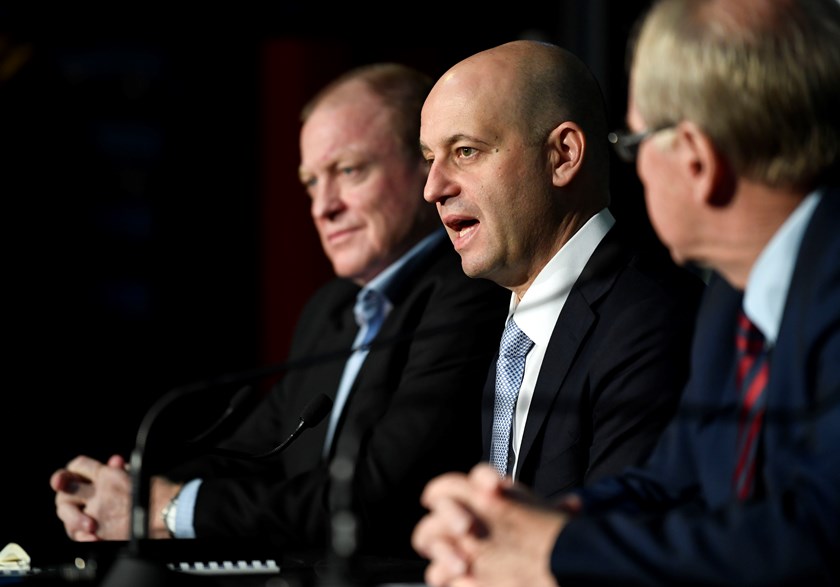
Weiss is chairman of Ridley Corporation Ltd, executive director of Ariadne Australia Ltd, as well as sitting on the boards of another eight top-ranked national and international companies covering areas like health, entertainment, media and research.
Greenberg hopes the $45 million figure will be topped, with those profits being shared evenly between the four main stakeholders: the clubs, players, grassroots and NRL.
"Every dollar we can generate over and above that $45 million profit gets shared among the stakeholders," he said.
"At the end of the five-year cycle, we distribute that back to the four stakeholders. So if we beat our revenue targets everyone benefits.
"I've said to the players there can't be a better opportunity in the game's history for you to get in behind us ... you have massive incentive to speak up, talk the game up.
"Why? Because if revenues go up you get a quarter of that upside."
While the Titans, Panthers and Broncos have completed their centres of excellence, another 10 clubs have secured funding to begin theirs.
The first of four main stadia to undergo reconstruction – Western Sydney Stadium at Parramatta – will be completed by March 2019.
Then North Queensland Stadium in Townsville will be finished in early 2020; Stadium Australia in Sydney by mid-2021; and the Sydney Football Stadium in Sydney by early 2022.

